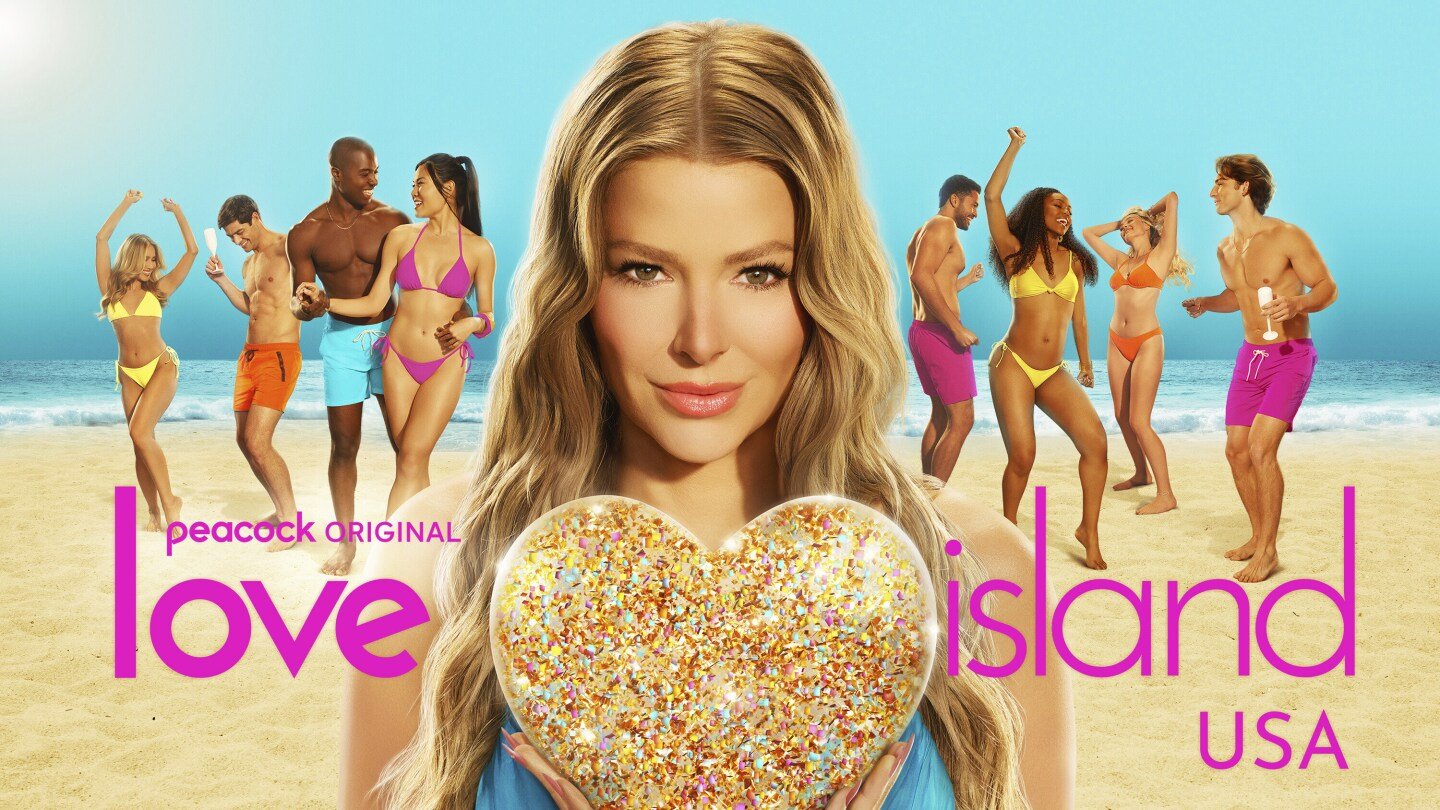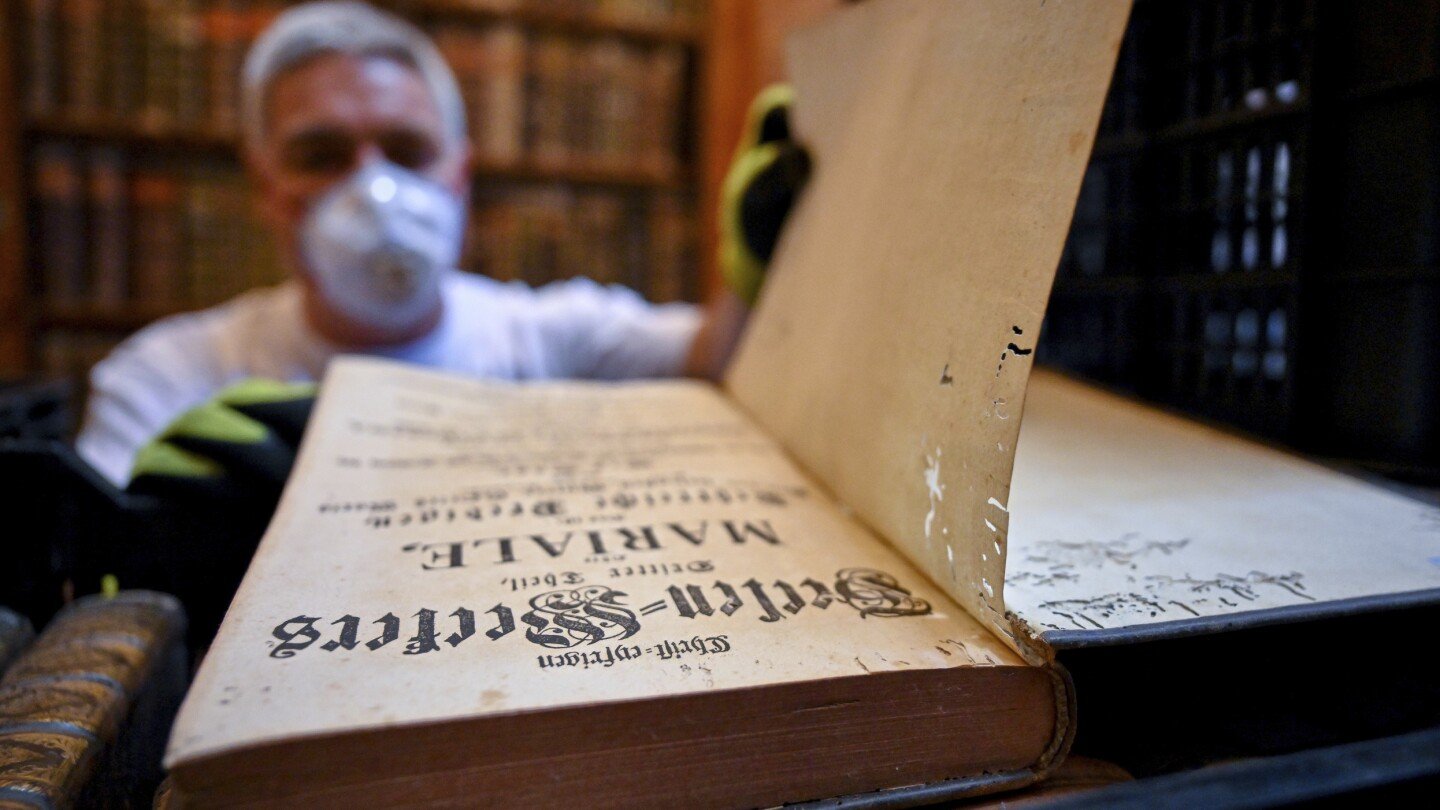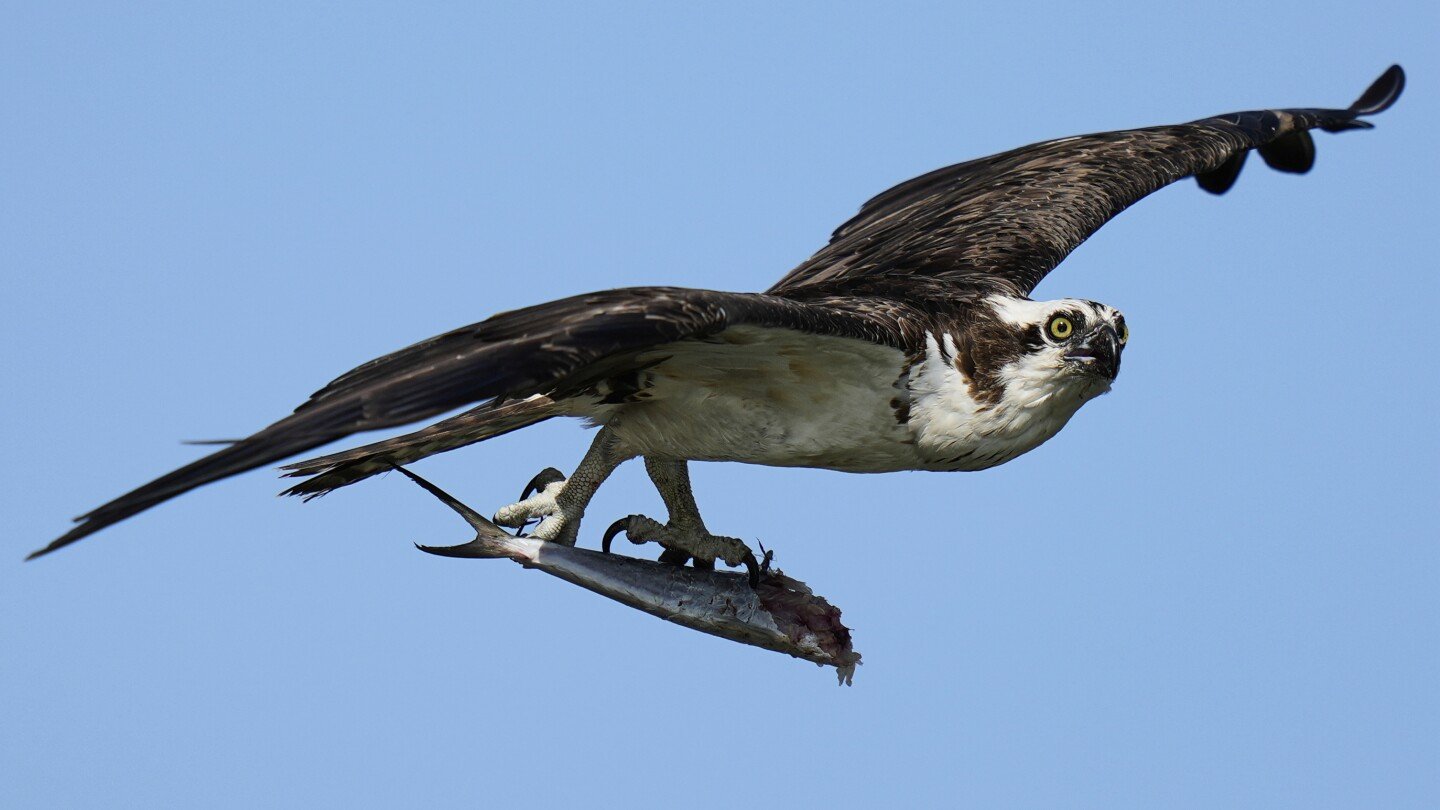Lifestyle
Gen Z finds its Broadway moment with ‘John Proctor’ and ‘Romeo + Juliet’

NEW YORK (AP) — Kimberly Belflower knew “John Proctor is the Villain” needed its final cathartic scene to work — and, for that, it needed Lorde’s “Green Light.”
“I literally told my agent, ‘I would rather the play just not get done if it can’t use that song,’” the playwright laughed. She wrote Lorde a letter, explaining what the song meant, and got her green light.
Starring Sadie Sink, the staggering play about high schoolers studying “The Crucible” as the #MeToo movement arrives in their small Georgia town, earned seven Tony nominations, including best new play — the most of any this season. It’s among a group of Broadway shows that have centered the stories of young people and attracted audiences to match.
Sam Gold’s Brooklyn-rave take on “Romeo + Juliet,” nominated for best revival of a play and led by Kit Connor and Rachel Zegler with music from Jack Antonoff, drew the youngest ticket-buying audience recorded on Broadway, producers reported, with 14% of ticket purchasers aged 18-24, compared to the industry average of 3%.
The shows share some DNA: pop music (specifically the stylings of Antonoff, who also produced “Green Light”), Hollywood stars with established fanbases and stories that reflect the complexity of young adulthood.
“It was very clear that young people found our show because it was doing what theater’s supposed to do,” Gold said. “Be a mirror.”
Embracing the poetry of teenage language
The themes “John Proctor” investigates aren’t danced around (until they literally are). The girls are quick to discuss #MeToo’s impact, intersectional feminism and sexual autonomy. Their conversations, true to teenage girlhood, are laced with comedy and pop culture references — Taylor Swift, Beyoncé, “Twilight,” and, of course, Lorde.
Fina Strazza, 19, portrays Beth, a leader who is whip-smart and well-intentioned — but whose friendships and belief system are shaken by the play’s revelations.
“You have so much empathy and are so invested in her, but she still has these mishaps and slip-ups that young people often have,” said Strazza, nominated for best featured actor in a play. Some audience members have given her letters detailing how Beth helped them forgive themselves for how they handled similar experiences.
This image released by O&M/DKC shows, from left, Amelia Yoo, Morgan Scott, Sadie Sink, Fina Strazza, Nihar Duvvuri and Hagan Oliveras during a performance of “John Proctor Is the Villain” in New York. (Julieta Cervantes/O&M/DKC via AP)
The script is written in prose, with frequent line breaks and infrequent capital letters. Director Danya Taymor, nominated for best direction of a play a year after winning a Tony for another teenage canon classic, “The Outsiders, ” was drawn to that rhythm — and how Belflower’s depiction of adolescence captured its intensity, just as S.E. Hinton had.
“There’s something about the teenage years that is so raw,” Taymor said. “None of us can escape it.”
Classic themes, made modern
During his Tony-winning production of “An Enemy of the People,” Gold found himself having conversations with young actors and theatergoers about climate change, politics and how “theater was something that people their age and younger really need in a different way, as the world is becoming so addicted to technology,” he said.
That conjured “Romeo and Juliet.” The original text “has it all in terms of what it means to inherit the future that people older than you have created,” Gold said.
Building the world of this show, with an ensemble under 30, was not unlike building “An Enemy of the People,” set in 19th century Norway, Gold said: “I think the difference is that the world that I made for this show is something that a very hungry audience had not gotten to see.”
Fans, Gold correctly predicted, were ravenous. Demand ahead of the first preview prompted a preemptive extension. Word (and bootleg video) of Connor doing a pullup to kiss Zegler made the rounds. “Man of the House,” an Antonoff-produced ballad sung by Zegler mid-show, was released as a single. With the show premiering just before the U.S. presidential election, Voters of Tomorrow even registered new voters in the lobby.
Audiences proved willing to pay: Average ticket prices hovered around $150. Cheaper rush and lottery tickets drew lines hours before the box office opened. Every week but one sold out.
“The show was initially really well sold because we had a cast that appealed to a really specific audience,” said producer Greg Nobile of Seaview Productions. “We continued to see the houses sell out because these audiences came, and they were all over online talking about the ways in which they actually felt seen.”
Building a Gen Z theater experience with Gen Z
Thomas Laub, 28, and Alyah Chanelle Scott, 27, started Runyonland Productions for that very reason.
“We both felt a lot of frustration with the industry, and the ways that we were boxed out of it as students in Michigan who were able to come to New York sparingly,” Laub said. Runyonland was launched in 2018 with the premise that highlighting new, bold voices would bring change.
This spring, Scott, known for playing Whitney in HBO’s “Sex Lives of College Girls,” acted off-Broadway in Natalie Margolin’s “All Nighter.”
“I was standing onstage and looking out and seeing the college kids that I was playing,” Scott said. “I was like, ‘I respect you so much. I want to do you proud. I want to show you a story that represents you in a way that doesn’t belittle or demean you, but uplifts you.’”
Alyah Chanelle Scott, from left, Kathryn Gallagher and Julie Lester appear in a scene from “All Nighter” in New York. (Evan Zimmerman/MurphyMade via AP)
Producing “John Proctor,” Scott said, gave Runyonland the opportunity to target that audience on a Broadway scale. Belflower developed the show with students as part of a The Farm College Collaboration Project. It’s been licensed over 100 times for high school and college productions. The Broadway production’s social and influencer marketing is run by 20-somethings, too.
Previews attracted fans with a $29 ticket lottery. While average prices jumped to over $100 last week (still below the Broadway-wide average), $40 rush, lottery and standing room tickets have sold out most nights, pushing capacity over 100%. The success is validating Runyonland’s mission, Laub said.
“Alyah doesn’t believe me that I cry every time at the end,” Laub said. Scott laughs. “I just want to assure you, on the record, that I do indeed cry every time.”
Harnessing a cultural catharsis
The final scene of “John Proctor” is a reclamation fueled by rage and “Green Light.” Capturing that electricity has been key to the show’s marketing.
“The pullup (in ‘Romeo + Juliet’) is so impactful because it’s so real. It’s like so exactly what a teenage boy would do,” Taymor said. “I think when you see the girls in ‘John Proctor’ screaming … it hits you in a visceral way.” That screaming made the Playbill cover.
Sadie Sink, left, and Amalia Yoo during a performance of “John Proctor Is the Villain” in New York. (Julieta Cervantes/O&M/DKC via AP)
“In my opinion, the look and feel of that campaign feels different from a traditional theatrical campaign, and it feels a lot closer to a film campaign,” Laub said. The show’s team indeed considered the zeitgeist-infiltrating work of their sister industries, specifically studios like Neon and A24.
In May, “John Proctor is the Villain” finished its second “spirit week” with a school spirit day. Earlier events included an ice cream social — actors served Van Leeuwen — a silent disco and a banned book giveaway. For those not in their own school’s colors, the merch stand offered T-shirts, including one printed with the Walt Whitman-channeling line said by Sink’s Shelby: “I contain frickin’ multitudes.”
Julia Lawrence, 26, designed the shirt after the show’s team saw her TikTok video reimagining their traditional merch into something more like a concert tee.
“It’s just so incredible to bring Gen Z into the theater that way, especially at a time when theater has never been more important,” Lawrence said. “In a world that’s overpowered by screens, live art can be such a powerful way to find understanding.”
___
For more coverage of the 2025 Tony Awards, visit https://apnews.com/hub/tony-awards.
Lifestyle
Love Island sparks debate about race and dating among Black women

It used to be that dating was as simple as deciding between dinner, a trip to the movies or an arcade. Now, understanding the dating scene has become intermingled with smartphones, matchmaking apps and one’s ability to navigate thorny social issues like racial preference in a mate.
“Love Island,” a widely popular international reality television franchise, is emblematic of the complexities of modern dating. It has also sparked heated discussions among fans about the desirability of Black women and darker-complexioned people both on and off air.
The show, which aired the finale of the seventh season of its U.S. version Sunday and is airing the 12th season of its U.K. version, casts conventionally attractive “islanders” who are generally in their early to late 20s for a six- to eight-week stay in a luxury villa. Men and women compete for long-lasting relationships and a cash prize.
But as the show’s daters face challenges meant to test their bonds, as well as elimination by villa mates or by fans’ vote, notions of who is and isn’t desirable frequently come up for viewers and contestants alike. In the end, many fans are left with the perception that racial bias, colorism and misogyny are especially inescapable for Black women on reality dating shows.
“The diversity in the U.K. one is terrible,” said Oghosa Ovienrioba, a content creator from London. “It’s very anti-Black.”
It’s not simply that Black women are picked last for coupling or eliminated first on the U.K. or U.S. versions of the show. Many fans say there’s a recurring theme of suitors dumping or ditching Black female contestants when there is a fairer skinned option. Black female contestants have also complained of not doing well on the show when they don’t lower their standards for intimacy with a suitor, as though they are lucky to even been considered dating material among more desirable mates.
Even with these viewer frustrations, Ovienrioba said she prefers “ Love Island USA.”
“I feel like the dark skin Black women on that show always find men who fit their vibe, who respect them, who are attracted to them, desire them, treat them like queens,” she said.
‘Love Island’ U.K. irks fans over treatment of Black women
In the U.K. version, fans have counted multiple instances where Black female contestants were left as the last choice when couples were picked, or they were first to get eliminated and dumped from the villa. Many have also noted that it took eleven seasons before a darker-complexioned Black woman was declared the winner.
Now in its 12th season, Love Island U.K. is still dogged by allegations of male contestants’ bias against Black women. After 23-year-old Alima Gagigo, a Black woman, chose to couple up with 26-year-old Blu Chegini, a white man, he said, “I’ll be honest, on paper, you’re not my type.”
Gagigo responded, “Of course,” as if those were words she was not surprised to hear.
There is no evidence that Chegini was referring to Gagigo’s race or ethnicity. But the exchange was enough to confirm what some in audience felt was an implicit bias against Black women in the villa.
“Love Island’s only stipulation is that applicants are over 18, single and looking for love. Our application and casting process is inclusive to all and we are always aiming to reflect the age and diversity of our audience on the show,” a show spokesperson for “Love Island U.K.” said.
Black American contestants, too, say their complexion impacts their treatment
JaNa Craig, a contestant on “Love Island USA’s” beloved sixth season, which aired last summer, landed a spot in the final four couples by the end of the competition alongside Kenny Rodriguez, who entered the villa 13 days into the season. Her bubbly personality made her a fan favorite.
Although she initially worried about how viewers felt about her, the positive audience reaction culminated in her being deemed the “baddest girl in Love Island history,” which means hot or beautiful in slang terms. Still, she felt some male contestants may not have been interested in her and Serena Page, another Black female contestant, because of their skin complexion. Page went on to win that season of “Love Island USA.”
“The very first time I felt special is when the very first guy picked me because he had three options. Other than that, I always felt like I was getting the short end of the stick,” Craig said. “Even though we know our worth and we know we’re beautiful, we still felt like — not good enough.”
Ultimately, Craig felt proudest when she heard from other Black women who said they appreciated her representation on the show, given the perception that Black women are less desirable on dating shows.
“I felt honored by the amount of Black girls that were like, ‘JaNa, you inspire me,’” she said.
“Love Island USA” producer Peacock, which on Sunday debuted a spinoff to its popular Season 6 season, titled “Love Island: Beyond the Villa,” declined comment for this story.
Desirability concerns reflect real-world anti-Black sentiments
Fans’ and contestants’ concerns about Black women’s representation on the show reflect a real-world anti-Black and misogynistic views of Black women, commonly referred to as misogynoir. Scholars describe it as both implicit and explicit contempt for Black women, much of it rooted in racist stereotypes that are perpetuated in popular culture and mass media. While Love Island contestants are not being outright racist to Black female competitors, many viewers feel the interactions Black women have had on the show have been laced with implicit bias.
Few viewers see anything wrong with “Love Island” contestants being open about the specific traits they look for in potential suitors. Tall over short, fit over average build, tattooed over unmarked.
But contestants’ racial preferences, whether real or simply perceived by fans of the show, can’t be seen as objective truth about who is or is not desirable in the world, said Alexandria Beightol, host of the podcast “Apathy Is Not An Option” at the Southern Poverty Law Center, a civil rights and legal advocacy nonprofit.
“You recognizing you have a type should also be you recognizing you are a product of a lot of mass media,” Beightol said.
The show’s producers should see the show’s popularity as an opportunity to dispel and not reinforce notions of beauty, especially ones harmful to Black women and darker-complexioned people, she added.
“It would behoove you to have some producers that look like some of the women on there who can kind of anticipate some of that drama,” Beightol said. “They do frame those women as beautiful. In the history of reality programming, they’ve busted through a lot of the implicit views that the media used to hold itself to.”
Lifestyle
Hungary’s oldest library is fighting to save 100,000 books from a beetle infestation

PANNONHALMA, Hungary (AP) — Tens of thousands of centuries-old books are being pulled from the shelves of a medieval abbey in Hungary in an effort to save them from a beetle infestation that could wipe out centuries of history.
The 1,000-year-old Pannonhalma Archabbey is a sprawling Benedictine monastery that is one of Hungary’s oldest centers of learning and a UNESCO World Heritage site.
Restoration workers are removing about 100,000 handbound books from their shelves and carefully placing them in crates, the start of a disinfection process that aims to kill the tiny beetles burrowed into them.
The drugstore beetle, also known as the bread beetle, is often found among dried foodstuffs like grains, flour and spices. But they also are attracted to the gelatin and starch-based adhesives found in books.
They have been found in a section of the library housing around a quarter of the abbey’s 400,000 volumes.
“This is an advanced insect infestation which has been detected in several parts of the library, so the entire collection is classified as infected and must be treated all at the same time,” said Zsófia Edit Hajdu, the chief restorer on the project. “We’ve never encountered such a degree of infection before.”
Abbey houses historical treasures
The beetle invasion was first detected during a routine library cleaning. Employees noticed unusual layers of dust on the shelves and then saw that holes had been burrowed into some of the book spines. Upon opening the volumes, burrow holes could be seen in the paper where the beetles chewed through.
The abbey at Pannonhalma was founded in 996, four years before the establishment of the Hungarian Kingdom. Sitting upon a tall hill in northwestern Hungary, the abbey houses the country’s oldest collection of books, as well as many of its earliest and most important written records.
For over 1,000 years, the abbey has been among the most prominent religious and cultural sites in Hungary and all of Central Europe, surviving centuries of wars and foreign incursions such as the Ottoman invasion and occupation of Hungary in the 16th century.
Ilona Ásványi, director of the Pannonhalma Archabbey library, said she is “humbled” by the historical and cultural treasures the collection holds whenever she enters.
“It is dizzying to think that there was a library here a thousand years ago, and that we are the keepers of the first book catalogue in Hungary,” she said.
Among the library’s most outstanding works are 19 codices, including a complete Bible from the 13th century. It also houses several hundred manuscripts predating the invention of the printing press in the mid-15th century and tens of thousands of books from the 16th century.
While the oldest and rarest prints and books are stored separately and have not been infected, Ásványi said any damage to the collection represents a blow to cultural, historical and religious heritage.
“When I see a book chewed up by a beetle or infected in any other way, I feel that no matter how many copies are published and how replaceable the book is, a piece of culture has been lost,” she said.
Books will spend weeks in an oxygen-free environment
To kill the beetles, the crates of books are being placed into tall, hermetically sealed plastic sacks from which all oxygen is removed. After six weeks in the pure nitrogen environment, the abbey hopes all the beetles will be destroyed.
Before being reshelved, each book will be individually inspected and vacuumed. Any book damaged by the pests will be set aside for later restoration work.
Climate change may have contributed
The abbey, which hopes to reopen the library at the beginning of next year, believes the effects of climate change played a role in spurring the beetle infestation as average temperatures rise rapidly in Hungary.
Hajdu, the chief restorer, said higher temperatures have allowed the beetles to undergo several more development cycles annually than they could in cooler weather.
“Higher temperatures are favorable for the life of insects,” she said. “So far we’ve mostly dealt with mold damage in both depositories and in open collections. But now I think more and more insect infestations will appear due to global warming.”
The library’s director said life in a Benedictine abbey is governed by a set of rules in use for nearly 15 centuries, a code that obliges them to do everything possible to save its vast collection.
“It says in the Rule of Saint Benedict that all the property of the monastery should be considered as of the same value as the sacred vessel of the altar,” Ásványi said. “I feel the responsibility of what this preservation and conservation really means.”
Lifestyle
Osprey are declining and environmentalists blame fishing industry’s take of menhaden

GLOUCESTER POINT, Va. (AP) — Stepping onto an old wooden duck blind in the middle of the York River, Bryan Watts looks down at a circle of sticks and pine cones on the weathered, guano-spattered platform. It’s a failed osprey nest, taken over by diving terns.
“The birds never laid here this year,” said Watts, near the mouth of Virginia’s Chesapeake Bay. “And that’s a pattern we’ve been seeing these last couple of years.”
An osprey is silhouetted as it perches atop a nest on the Lynnhaven River, June 30, 2025, in Virgina Beach, Va. (AP Photo/Stephanie Scarbrough)
Watts has a more intimate relationship with ospreys than most people have with a bird — he has climbed to their nests to free them from plastic bags, fed them by hand and monitored their eggs with telescopic mirrors.
The fish-eating raptor known for gymnastic dives and whistle-like chirps is an American conservation success story. After pesticides and other hazards nearly eliminated the species from much of the country, the hawk-like bird rebounded after the banning of DDT in 1972 and now numbers in the thousands in the U.S.
An osprey flies with a half-eaten fish in its talons above the Lynnhaven River, June 30, 2025, in Virginia Beach, Va. (AP Photo/Stephanie Scarbrough)
But Watts has documented an alarming trend. The birds, which breed in many parts of the U.S., are failing to successfully fledge enough chicks around their key population center of the Chesapeake Bay. The longtime biologist blames the decline of menhaden, a small schooling fish critical to the osprey diet. Without menhaden to eat, chicks are starving and dying in nests, Watts said.
Osprey are an environmental indicator
Watts’s claim has put him and environmental groups at odds with the fishing industry, trade unions and sometimes government regulators. Menhaden is valuable for fish oil, fish meal and agricultural food as well as bait.
U.S. fishermen have caught at least 1.1 billion pounds of menhaden every year since 1951. Members of the industry tout its sustainability and said the decline in osprey may have nothing to do with fishing.
But without help, the osprey population could tumble to levels not seen since the dark days of DDT, said Watts, director of the Center for Conservation Biology at The College of William & Mary in Williamsburg, Virginia.
Brian Watts, research professor and director of the Center for Conservation Biology at The College of William & Mary, looks over at failed osprey nest atop a wooden duck blind on the Lower York River, June 30, 2025, in Gloucester Point, Va. (AP Photo/Stephanie Scarbrough)
“The osprey are yelling pretty loudly that, hey, there’s not enough menhaden for us to reproduce successfully,” Watts said. “And we should be listening to them to be more informed fully on the fisheries side, and we should take precaution on the fisheries management side. But that hasn’t won the day at this point.”
Decline linked to menhaden in studies
Watts, who has studied osprey on the Chesapeake for decades, has backed his claims of population decline by publishing studies in scientific journals. He said it boils down to a simple statistic — to maintain population, osprey pairs need to average 1.15 chicks per year.
Osprey were reproducing at that level in the 1980s, but today in some areas around the main stem of the Chesapeake, it’s less than half of that, Watts said. In particularly distressed areas, they aren’t even reproducing at one-tenth that level, he said. And the decline in available menhaden matches the areas of nesting failure, Watts said.
A bald eagle, left, steals a fish from an osprey before it could feed above the Lynnhaven River, June 30, 2025, in Virginia Beach, Va. (AP Photo/Stephanie Scarbrough)
Also called pogies or bunkers, the oily menhaden are especially important for young birds because they are more nutritious than other fish in the sea. Osprey “reproductive performance is inextricably linked to the availability and abundance” of menhaden, Watts wrote in a 2023 study published in Frontiers in Marine Science.
Conservationists have been concerned for years, saying too many menhaden have been removed to maintain their crucial role in the ocean food chain. Historian H. Bruce Franklin went so far as to title his 2007 book on menhaden “The Most Important Fish In The Sea.”
Fishing industry pushes back
Menhaden help sustain one of the world’s largest fisheries, worth more than $200 million at the docks in 2023. Used as bait, the fish are critical for valuable commercial targets such as Maine lobster. They’re also beloved by sportfishermen.
The modern industry is dominated by Omega Protein, a Reedville, Virginia, company that is a subsidiary of Canadian aquaculture giant Cooke. The company pushed back at the idea that fishing is the cause of osprey decline, although it did acknowledge that fewer menhaden are showing up in some parts of the bay.
Federal data show osprey breeding is in decline in many parts of the country, including where menhaden is not harvested at all, said Ben Landry, an Omega spokesperson. Climate change, pollution and development could be playing a role, said Landry and others with the company.
Blaming fishing “just reeks of environmental special interest groups having an influence over the process,” Landry said.
New rules could be on the way
The menhaden fishery is managed by the Atlantic States Marine Fisheries Commission, an interstate body that crafts rules and sets fishing quotas. Prompted by questions about ospreys, it created a work group to address precautionary management of the species in the Chesapeake Bay.
A young osprey returns to its nest on the Lynnhaven River, June 30, 2025, in Virginia Beach, Va. (AP Photo/Stephanie Scarbrough)
In April, this group proposed several potential management approaches, including seasonal closures, restrictions on quotas or days at sea, and limitations on kinds of fishing gear. The process of creating new rules could begin this summer, said James Boyle, fishery management plan coordinator with the commission.
The osprey population has indeed shown declines in some areas since 2012, but it’s important to remember the bird’s population is much larger than it was before DDT was banned, Boyle said.
“There are big increases in osprey population since the DDT era,” Boyle said, citing federal data showing a six-fold increase in osprey populations along the Atlantic Coast since the 1960s.
Environmentalists says bird’s decline could worsen
To a number of environmental groups, any decline is too much. This irritates some labor leaders who worry about losing more jobs as the fishing industry declines.
Kenny Pinkard, retired vice president of UFCW Local 400’s executive board and a longtime Virginia fishermen, said he feels the industry is being scapegoated.
“There are some people who just don’t want to see us in business at all,” he said.
But Chris Moore, Virginia executive director for Chesapeake Bay Foundation, said the country risks losing an iconic bird if no action is taken. He said Watts’s studies show that the osprey will fail without access to menhaden.
“Osprey have been a success story,” Moore said. “We’re in a situation where they’re not replacing their numbers. We’ll actually be in a situation where we’re in a steep decline.”
___
Whittle reported from Portland, Maine.
___ This story was supported by funding from the Walton Family Foundation. The AP is solely responsible for all content.
-

 Asia5 days ago
Asia5 days agoGujarat state: Bridge collapse kills 9 in India
-

 Europe5 days ago
Europe5 days agoTrump promised 200 deals by now. He’s gotten 3, and 1 more is getting very close
-

 Sports3 days ago
Sports3 days agoBill Ackman: Swift backlash after billionaire’s pro debut
-

 Europe3 days ago
Europe3 days agoGerman tourist found alive 12 days after she was lost in the Australian Outback
-

 Africa5 days ago
Africa5 days agoTop European court delivers series of damning rulings against Russia
-

 Europe2 days ago
Europe2 days agoAs South Korea becomes a key arms supplier to US allies, its best customer is on the edge of a warzone
-

 Africa5 days ago
Africa5 days agoGreece blocks asylum claims after surge in migrant arrivals
-

 Lifestyle4 days ago
Lifestyle4 days agoHealthy workday snacks include a smart mix of energy-boosters




